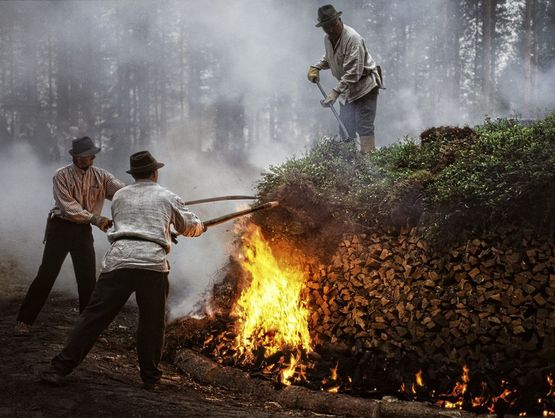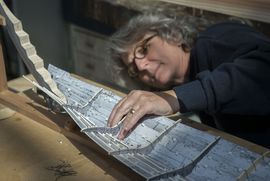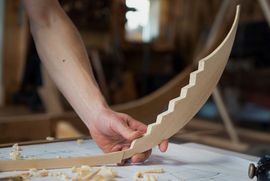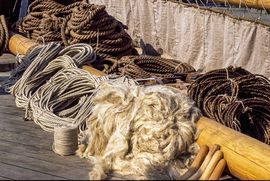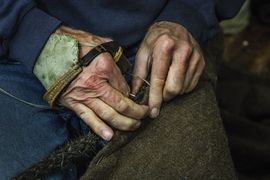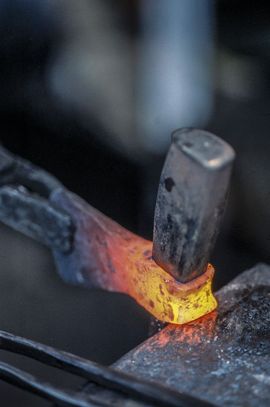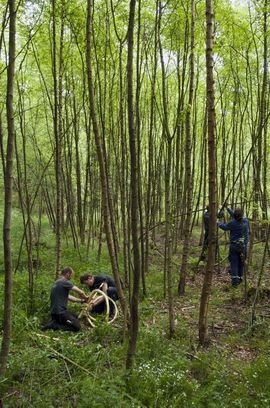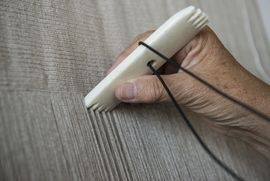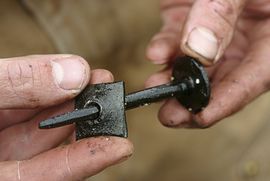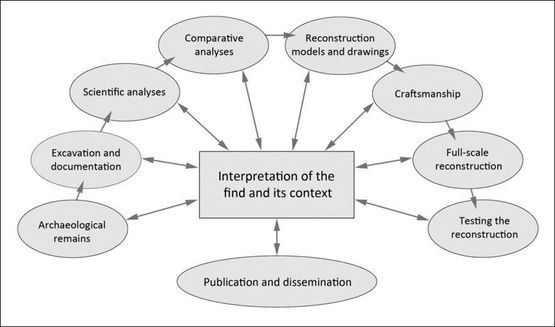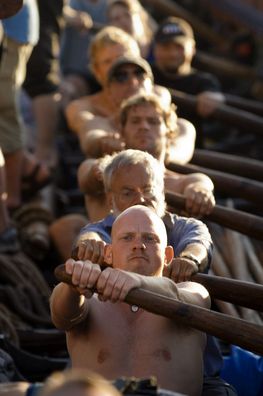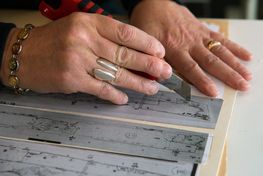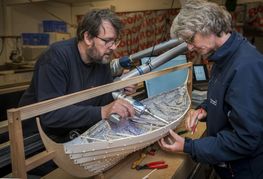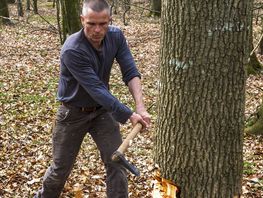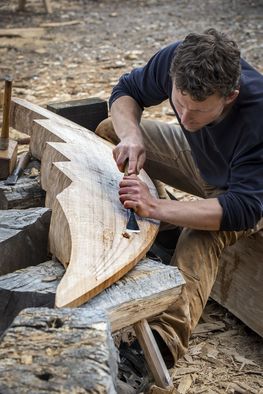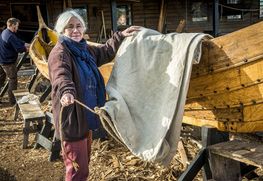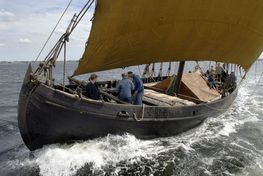Why are we reconstructing the ship?
Since Skuldelev 5 was excavated in 1962, we have already learned a great deal about the ship. With the help of scientific analyses, we know – roughly – where it was built, when, what materials were used and what quality they had, what kind of ship it was, that many repairs were carried out during its lifetime, and many other fine details. All insights that contribute to our understanding of Viking Age shipbuilding.
Natural science is thus an important step in the overall study of ship-finds. But it also has its limitations when it comes to questions concerning what physical sailing capabilities a ship had, how a ship could be handled in practice and many other craft and cultural-historical aspects that are difficult – if not completely impossible – to explore in a laboratory or traditional exhibition.
Experimental archaeology comes into play
Experimental archaeology is a research method which involves building, and using full-scale reconstructions of archaeological artefacts in order to investigate aspects of technology and production in the past – or in our case, a warship from the late Viking Age.
It is a multidisciplinary process that requires many different types of expertise. Archaeologists, historians, natural scientists, foresters, blacksmiths, boatbuilders, rope-makers, weavers, sailmakers, sailors and more must engage in an interdisciplinary collaboration, where everyone brings their own particular expertise to the table and where each discipline contributes with their own knowledge and experience.
![[Translate to English:] Kløvning af egestamme til Skuldelev 5 [Translate to English:] Kløvning af egestamme til Skuldelev 5](/frontend/_processed_/1/3/csm_2023_06_06_12_13_48_WK_3f82264310.jpg)
You can get regular updates from the project on the Museum's Instagram profile:
» Visit us on Instagram...
See regular photo and film updates on Facebook:
» Visit us on Facebook...
Read about the Find
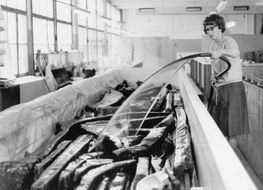
Skuldelev 5 is what we call a ship-find, because it was deliberately sunk to create a barrier out on the fjord.
The build in pictures
![[Translate to English:] Skuldelev 5 - stævn [Translate to English:] Skuldelev 5 - stævn](/frontend/_processed_/d/2/csm_2023_06_20_14_26_01_WK_bf6c948f9e.jpg)
We continuously document the reconstruction of Skuldelev 5. You can follow the build in pictures in our gallery.
» Take a look..
